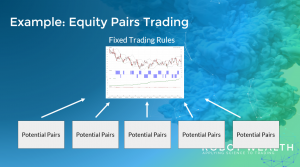
Cointegrationk-means clusteringRTrading strategies
Pairs Trading Literature Review
This post summarises the key lessons of the academic literature that has been published on pairs trading. The key themes

This post summarises the key lessons of the academic literature that has been published on pairs trading. The key themes

In our previous post, we looked into implementing a Kalman filter in R for calculating the hedge ratio in a

This Kalman Filter Example post is the first in a series where we deploy the Kalman Filter in pairs trading.

Some price series are mean reverting some of the time, but it is also possible to create portfolios which are

In the first Mean Reversion and Cointegration post, I explored mean reversion of individual financial time series using techniques such

This series of posts is inspired by several chapters from Ernie Chan’s highly recommended book Algorithmic Trading. The book follows Ernie’s